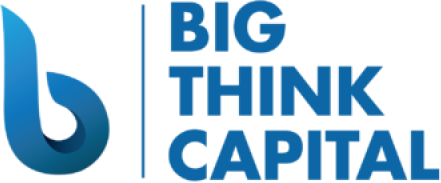Demystifying the Impact of Recent Federal Reserve Interest-Rate Decisions on Small Business Lending
Estimated Reading Time: 7 minutes
- Understanding how Fed interest-rate decisions affect the cost of borrowing for small businesses.
- Exploring flexible financing options amid stricter lending criteria.
- Strategies for maintaining healthy cash flow and bank relationships.
- Insights on Merchant Cash Advances and Working Capital Advances.
Table of Contents
- Understanding Fed Rate Decisions
- Implications for Small Business Loans
- Strategies for Navigating New Loan Landscapes
- Effect on Merchant Cash Advances and Working Capital Advances
- Anticipating and Adjusting Cash Flow
- Maintaining Healthy Bank Relationships Amidst Changes
- Conclusion
- FAQ
Understanding Fed Rate Decisions
The Federal Reserve, often referred to simply as the Fed, plays a critical role in shaping the U.S. economy through its monetary policy. By adjusting the federal funds rate, the Fed influences overall economic conditions, including inflation, employment, and consumer spending. In recent months, the Fed has made headlines with its aggressive interest-rate hikes aimed at curbing inflation, which has remained stubbornly high due to supply chain issues and increased consumer demand.
Key Points of Fed Interest-Rate Decisions:
- Inflation Control: The Fed raises rates to make borrowing more expensive, thereby slowing down spending and reducing inflationary pressure. In 2023, the Fed raised rates several times, and analysts expect this trend to continue into 2025 to keep inflation in check.
- Market Reactions: Rate changes not only affect banks and financial institutions but also impact small businesses looking for loans. Higher rates generally lead to increased borrowing costs for businesses.
- Long-Term Influences: While short-term adjustments can create immediate changes in market conditions, long-term rate stability is essential for business planning and investment.
The Fed’s decisions can seem distant from day-to-day operations; however, they directly impact small business financing options. Understanding these decisions can empower business owners to make informed financial choices.
Implications for Small Business Loans
The increased Fed interest rates lead to various implications for small business loans. Here are some key considerations:
- Increased Cost of Borrowing: As the Fed raises interest rates, lenders usually pass these costs onto borrowers. For small businesses, this means higher interest rates on traditional loans and other financing products.
- Stricter Lending Criteria: Higher rates often lead to more stringent lending criteria. Lenders become more cautious, evaluating borrowers’ creditworthiness more rigorously. Businesses may need to prepare more documentation and demonstrate their financial health effectively.
- Shift in Financing Preferences: Faced with the prospect of high-interest loans, many small businesses may explore alternative financing options, including Merchant Cash Advances and Working Capital Advances, which can provide quicker access to funds despite varying costs.
Strategies for Navigating New Loan Landscapes
To thrive in this evolving lending landscape, small business owners must adapt their financing strategies. Here are several practical steps:
- Reassess Funding Needs: Evaluate your current financial situation. Are there immediate needs that can be covered by acquiring a loan, or can certain expenditures be postponed or managed differently?
- Consider Alternative Financing: As traditional loans become more expensive, consider alternative lending products. Merchant Cash Advances and Working Capital Advances can offer flexibility and speed, making them attractive options for businesses that need quick access to capital.
- Build Financial Resilience: Strengthen your business’s financial health by maintaining a positive cash flow, reducing unnecessary expenses, and considering more sustainable financing options to improve your creditworthiness.
- Diversify Funding Sources: Explore various funding sources, including traditional banks, credit unions, and alternative lenders. Keeping multiple options open can provide leverage in negotiations and lead to more favorable terms.
Effect on Merchant Cash Advances and Working Capital Advances
As small businesses navigate the changing interest rates, many turn to alternative financing methods, such as Merchant Cash Advances (MCA) and Working Capital Advances. Here’s how these options are impacted:
- Flexibility and Speed: MCAs are based on future sales, providing businesses with immediate cash flow to manage daily operations or unexpected expenses. While the costs of MCAs may not be lower than traditional loans, they offer flexibility in repayment terms adjusted to your sales.
- High Approval Rates: Working Capital Advances cater to businesses that might struggle with traditional loan qualifications. They generally have more lenient credit score requirements, making them an appealing option amidst stricter standards from banks.
- Cost Considerations: Be aware of the costs associated with these alternatives. Although MCAs and Working Capital Advances can provide quick cash, they tend to have higher fees compared to traditional financing sources. Businesses should weigh the urgency of their funding needs against the overall costs.
Utilizing these financing options can be a viable strategy for businesses looking to maintain operations and invest in growth, even during challenging economic periods.
Anticipating and Adjusting Cash Flow
With the Fed’s interest rates on the rise, maintaining healthy cash flow becomes more critical than ever for small businesses. Here are some strategies to consider:
- Monitor Cash Flow Regularly: Use cash flow projections to anticipate future needs. This can help you better understand your financial position and prepare for potential downturns in revenue.
- Set Up an Emergency Fund: Establish a cash reserve for unexpected expenses or slow sales periods. This can help mitigate the financial impact of rising interest rates and provide a buffer during tough economic times.
- Optimize Receivables: Streamline your accounts receivable process to ensure timely payments from clients and customers. Implement clear payment terms, follow up promptly on outstanding invoices, and consider offering discounts for early payment.
- Use Technology for Financial Management: Leverage financial management software to track income, expenses, and cash flow in real-time. This helps to make informed decisions quickly and adjust financial strategies as needed.
By practicing vigilant cash flow management, small businesses can navigate fluctuations in the economy while remaining prepared for future financing needs.
Maintaining Healthy Bank Relationships Amidst Changes
Finally, establishing and sustaining strong relationships with financial institutions is essential in the current landscape. Here’s how to cultivate those relationships:
- Communicate Openly: Maintain transparent communication with your banker or lender. Regular check-ins can ensure they understand your financial needs and goals, which can be beneficial in securing favorable loan terms.
- Build Trust: Establish a reputation for being a reliable borrower by making timely payments and demonstrating financial responsibility.
- Seek Financial Advice: Your financial institution can be a valuable resource for advice on managing finances and accessing capital. Don’t hesitate to seek their expertise, especially when navigating complex funding options.
- Participate in Programs: Engage in any financial literacy programs or workshops your bank offers. This can enhance your financial knowledge and signal your commitment to responsible borrowing and investment.
By fostering strong relationships with lenders, small businesses can not only find better financing options but also gain access to valuable resources and expertise.
Conclusion
In summary, understanding the implications of recent Federal Reserve interest-rate decisions is crucial for small business owners looking to secure financing in 2025. By reassessing funding needs, exploring alternative financing options, and actively managing cash flow, you can navigate this complex lending landscape with confidence.
As you consider your options for small business loans, Merchant Cash Advances, and Working Capital Advances, remember that preparation is key. Embrace the changes and use them as an opportunity to strengthen your financial strategy.
If you want to learn more about how to navigate small business financing or speak with a funding expert, visit us at bigthinkcapital.com. We are here to help you secure the funds you need to grow your business.
FAQ
Q: How do recent Fed rate hikes affect my ability to get a loan?
A: Recent Fed rate hikes can lead to increased borrowing costs and stricter lending criteria, making it potentially more challenging for small businesses to secure loans.
Q: What alternative financing options should I consider?
A: Consider alternative options such as Merchant Cash Advances or Working Capital Advances, which may provide faster access to funds despite possibly higher costs.
Q: How can I manage my cash flow effectively during times of rising interest rates?
A: Monitor cash flow regularly, set up an emergency fund, optimize receivables, and leverage technology for financial management.
Q: Why is maintaining a relationship with my bank important?
A: A strong relationship with your bank can help ensure better financing options and provide valuable resources and advice for managing your business’s financial health.






